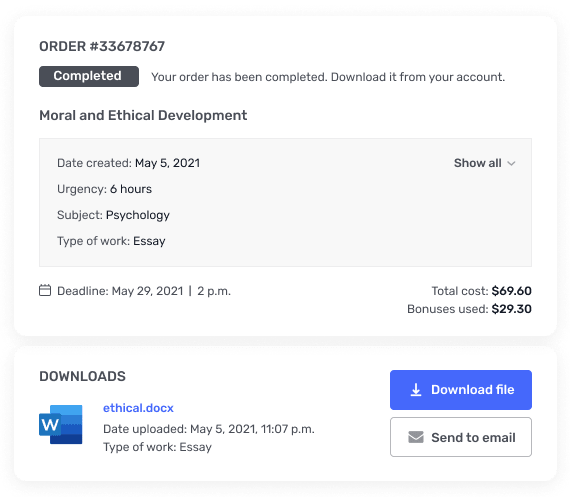Notre ECON 30010 – Three Price Discrimination Problems
Three Price Discrimination Problems (Economics)1. The cost of producing y is c(y) = 5 + 7y. Demand for y is given by y(p) if p > 10 0=10 if p ? (8, 10] 20 if p ? [0, 8] a) What are the monopoly price, quantity, profit, and total surplus?b) Suppose the monopoly can price discriminate between the two following sub-markets: y1 (p) if p > 10 0=7if p ? (8, 10] 10 if p ? [0, 8] y2 (p) 0=3 10 if p > 10if p ? (8, 10]if p ? [0, 8] Find the prices, profit, and total surplus. 2. A product can be produced at either one of two quality levels: H (for high) or L (for low). The cost ofproduction is zero for both quality levels. Consumers are interested in having one unit of this product.There are two types of consumers, which the monopolist cannot observe. Consumers of type 1 are willing topay up to $20 per unit of quality H and up to $10 per unit of quality L (i.e., the consumers surplus of such aconsumer is 20-p if she buys an H unit for price p and it is 10 ? p if she buys an L unit for the price p);consumers of type 2 are willing to pay up to $8 per unit of quality H and up to $6 per unit of quality L. LetN1 and N2 denote the numbers of consumers of the two types respectively.a)Find the price and quality chosen by a monopoly who is restricted to produce all units at the samequality, when N1 = 10, N2 = 20 and when N1 = 100, N2 = 10b) Suppose now that the monopoly can offer a menu of different quality levels at different prices.Find the profit maximizing menu that the monopoly will offer in each of the two cases consideredin part (a) above.c) For each of these cases compare the social welfare arising in scenario (a) to that arising in scenario(b). 1 3. Heineken is a monopolist which sells beer in the US and Europe. The inverse demand functions forthe two markets areEurope: p =USA: p = 200 ? y100 ? 2y Define ye , yu as the beer consumed in Europe and the US, respectively. Heineken has one plant locatedin Amsterdam which produces all the beer for each market using cost function c(y) = 40y.a) Assume Heineken cannot price discriminate. Show the aggregate demand curve is 0Y =200 ? p 250 ? 3p2 p > 200p ? (100, 200]p ? [0, 100] b) State the profit maximization problem.c) Now assume that Heineken can set different prices in each geographic market. State the profitmaximization problem it now solves.d) Compute equilibrium prices (pe, pu), market quantities (ye, yu), market profits (?e, ?u), and totalsurplus (T Se, T Su).e) Compute the profit maximizing equilibrium if Heineken cannot price discriminate. How does iscompare to the one with price discrimination?f) The WTO is considering a regulation which would ban price discrimination in the alcohol industryand has asked for your advice. Specifically, they want to know whether uniform pricing would bewelfare increasing or decreasing in this market. What’s your recommendation?g) French rioters spilled over into Amsterdam and blockaded the factory. As a result, Heinekenworkers were only able to produce 75% of the total output found above. Define Y ? = ye? + yu? as thetotal output found in part (d), and define Y = 0.75Y ? as the total amount of beer that was actuallyproduced and is now sitting in a warehouse ready for shipment. Heineken management, ever thecapitalists, have decided to reallocate the shipment between the European and US market tomaximize profits. What are the new equilibrium prices pe, pu, market quantities (ye, yu), andmarket profits (?e, ?u)? 2




